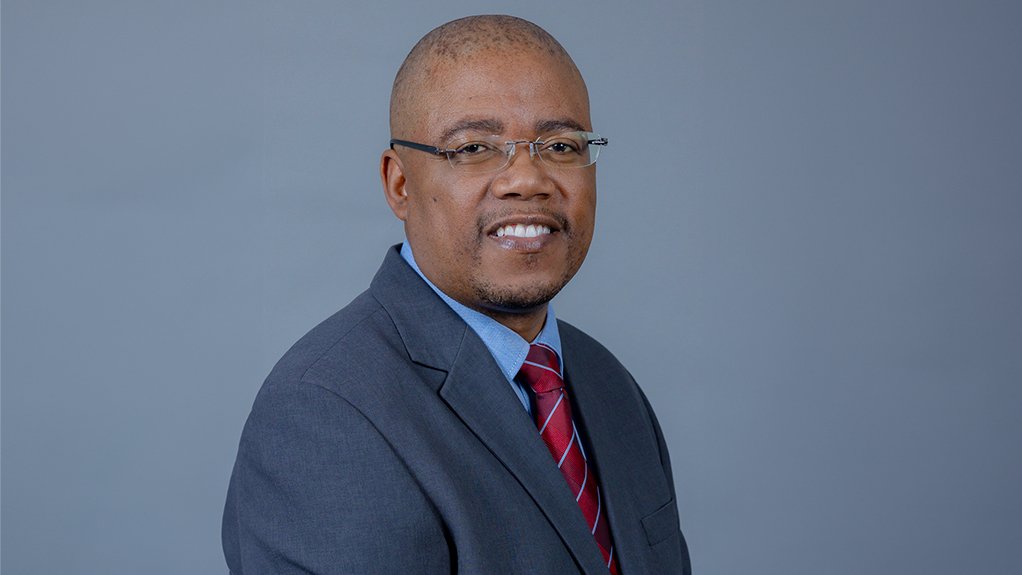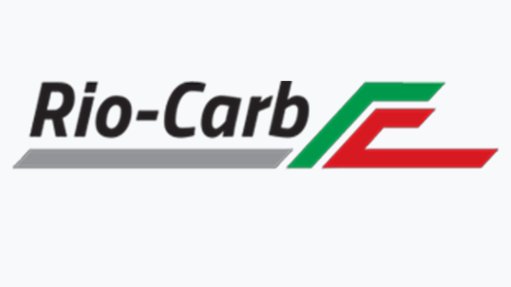Development finance institutions are key architects of hydrogen economy – Nhleko
JOHANNESBURG (miningweekly.com) – Development finance institutions (DFIs) are more than just financial supporters of the hydrogen economy, they are important architects of its future, Development Bank of Southern Africa (DBSA) chief economist Zeph Nhleko writes in an Op-Ed released on Monday.
By mobilising capital, influencing policy, and offering technical support, DFIs are driving the growth of hydrogen projects, especially in emerging markets, Nhleko highlights.
Mining Weekly can also add that the relevance of the growing role of platinum group metals (PGMs) in the green hydrogen economy is strengthening significantly worldwide.
“As countries like South Africa work to harness their renewable resources and develop hydrogen technologies, DFIs will remain central to overcoming challenges and advancing towards a sustainable energy future,” Nhleko adds in the release.
DBSA recently published a working paper on the hydrogen economy. As the world turns towards greener energy solutions, hydrogen stands out as a transformative force in the quest for sustainability.
DFIs are playing an important role in nurturing this growing sector, particularly in emerging markets and developing economies. Their involvement goes far beyond just providing funds, they are shaping the future of hydrogen by managing risks, influencing policies, and offering crucial technical support, Nhleko outlines.
BRIDGING MONEY GAP
Hydrogen technology holds incredible promise, but it demands substantial investment.
In developing countries, where the annual need for funding can reach around $100-billion, traditional financiers often hesitate owing to the high risks and costs involved, which is where DFIs step in, Nhleko outlines.
Mining Weekly has received a LinkedIn release to the effect that the European Commission has approved State aid of €998-million for green hydrogen production, which is PGM-based.
The Dutch government will provide direct grants of up to 80% of project investment costs.
The grants are open to projects with at least 0.5 MW of electrolyser capacity and will be awarded following a competitive auction set to run this year.
Holland is reportedly targeting reaching 500 MW of electrolyser capacity in 2025 and 3 GW to 4 GW by the decade-end.
The European Union is expected to install at least 6 GW of electrolysers in 2024 and at least 40 GW by 2030.
The Dutch State aid approval comes on the heels of the European Commission approving a €1.2-billion Spanish scheme to support the production of green hydrogen.
DFI AND RISK
"DFIs specialise in funding projects that might seem too risky for conventional investors. They use innovative financial models like blended finance, equity, and loans to bridge the funding gap. For example, a DFI might provide initial funding or guarantees that help attract private investors. This approach not only de-risks these projects but also brings in additional investment, making it feasible to push forward with ambitious hydrogen initiatives," Nhleko points out.
SHAPING SUPPORTIVE POLICIES
The right policies can make or break the growth of the hydrogen economy. Points Nhleko highlights include DFIs being instrumental in crafting enabling policies by collaborating with governments and stakeholders. They help design regulations that make hydrogen investments more attractive and less risky.
DFIs, he adds, advocate for policies that might include tax incentives or subsidies for early adopters of hydrogen technology. They also work to ensure that hydrogen projects align with national energy strategies, creating a stable and encouraging environment for investors. By helping shape these policy frameworks, DFIs play a key role in ensuring that hydrogen projects get the support they need to succeed.
BUILDING TECHNICAL EXPERTISE, INFRASTRUCTURE
Financial backing is only part of the equation. DFIs also provide essential technical support and help build the infrastructure needed for hydrogen production and distribution. This includes facilitating processes like competitive bidding for renewable-energy projects and assisting in the creation of hydrogen-specific strategies.
For instance, DFIs help countries develop the infrastructure required for hydrogen, such as electrolysers for production or refueling stations for hydrogen vehicles. They bring technical expertise and facilitate knowledge transfer, enabling regions with abundant renewable resources to effectively develop their hydrogen economies.
SOUTH AFRICA'S HYDROGEN AMBITIONS
South Africa is setting its sights on becoming a major player in the hydrogen economy. With projections suggesting that hydrogen could contribute up to 3.6% to the country’s GDP and create about 380 000 jobs by 2050, the stakes are high. Initiatives like the SA-H2 fund are important in this vision, and DFIs such as DBSA and the Industrial Development Corporation (IDC) are key partners in this effort.
These DFIs are not just funding hydrogen projects, they are helping to attract international investment and expertise in strategic industrial projects, which are known as Strategic Infrastructure Projects in South Africa.
“Their support is essential for making South Africa competitive in the global hydrogen market, fostering innovation and attracting further investment,” Nhleko contends.
As reported by Engineering News on Monday, the EU has announced R628-million (€32-million) in grant funding to support the development of South Africa’s nascent green-hydrogen industry, as well as to facilitate net-zero-related investments across Transnet’s rail, port and pipeline operations, including to prepare them for the production and storage of green hydrogen.
The grants are additional to the EU’s Just Energy Transition Partnership funding with South Africa and were confirmed by European Commissioner for Energy Kadri Simson at a briefing in Pretoria, where she also met South Africa’s Electricity and Energy Minister Dr Kgosientsho Ramokgopa and Trade, Industry and Competition Minister Parks Tau.
CHALLENGES AND OPPORTUNITIES
While DFIs are making significant strides, Nhleko also points to the challenges they face, which he lists as:
- hydrogen projects often coming with steep initial costs, which behoves DFIs to continue developing creative financing solutions to tackle this issue;
- the massive undertaking of building the necessary infrastructure for hydrogen, which points to DFI’s needing to collaborate with governments and the private sector to address these needs; and
- the uncertainties that come with the evolving landscape of hydrogen regulations, and the ability of DFIs to help by engaging in policy advocacy and supporting the development of clear, consistent regulations.
PLATINUM EXPECTATIONS
Mining Weekly notes that hundreds of billions of dollars in tax incentives and subsidies from governments worldwide supporting platinum group metal demand in the green hydrogen sector are likely to be detailed by the World Platinum Investment Council when it releases its latest Platinum Quarterly on September 10.
Hopes are high that the green hydrogen trend will steadily accelerate. Interestingly, the latest issue of Hydrogen Fuel News states that although Texas is known for oil, it is moving to become a hydrogen fuel provider.
The publication reports that Texas has long been known as an energy-rich state, and is increasingly mixing its energy sources as it expands, decarbonises, and adapts to a world that is growing its focus on clean energy.
“Texas is already among the states leading the way in the US for renewable power generation such as wind and solar energy. As Texas continues to expand its reach into cleaner energy, it has started defining itself in hydrogen as well,” the publication adds.
Article Enquiry
Email Article
Save Article
Feedback
To advertise email advertising@creamermedia.co.za or click here
Announcements
What's On
Subscribe to improve your user experience...
Option 1 (equivalent of R125 a month):
Receive a weekly copy of Creamer Media's Engineering News & Mining Weekly magazine
(print copy for those in South Africa and e-magazine for those outside of South Africa)
Receive daily email newsletters
Access to full search results
Access archive of magazine back copies
Access to Projects in Progress
Access to ONE Research Report of your choice in PDF format
Option 2 (equivalent of R375 a month):
All benefits from Option 1
PLUS
Access to Creamer Media's Research Channel Africa for ALL Research Reports, in PDF format, on various industrial and mining sectors
including Electricity; Water; Energy Transition; Hydrogen; Roads, Rail and Ports; Coal; Gold; Platinum; Battery Metals; etc.
Already a subscriber?
Forgotten your password?
Receive weekly copy of Creamer Media's Engineering News & Mining Weekly magazine (print copy for those in South Africa and e-magazine for those outside of South Africa)
➕
Recieve daily email newsletters
➕
Access to full search results
➕
Access archive of magazine back copies
➕
Access to Projects in Progress
➕
Access to ONE Research Report of your choice in PDF format
RESEARCH CHANNEL AFRICA
R4500 (equivalent of R375 a month)
SUBSCRIBEAll benefits from Option 1
➕
Access to Creamer Media's Research Channel Africa for ALL Research Reports on various industrial and mining sectors, in PDF format, including on:
Electricity
➕
Water
➕
Energy Transition
➕
Hydrogen
➕
Roads, Rail and Ports
➕
Coal
➕
Gold
➕
Platinum
➕
Battery Metals
➕
etc.
Receive all benefits from Option 1 or Option 2 delivered to numerous people at your company
➕
Multiple User names and Passwords for simultaneous log-ins
➕
Intranet integration access to all in your organisation



















